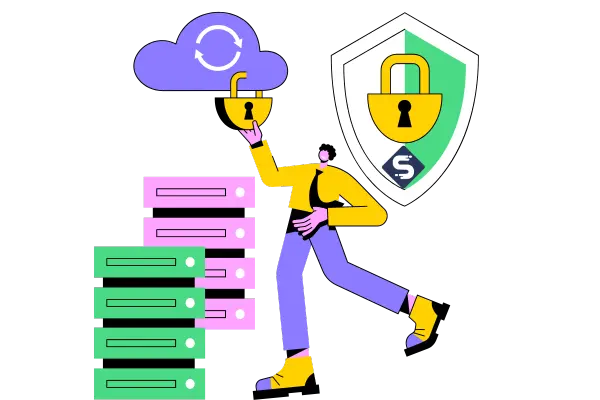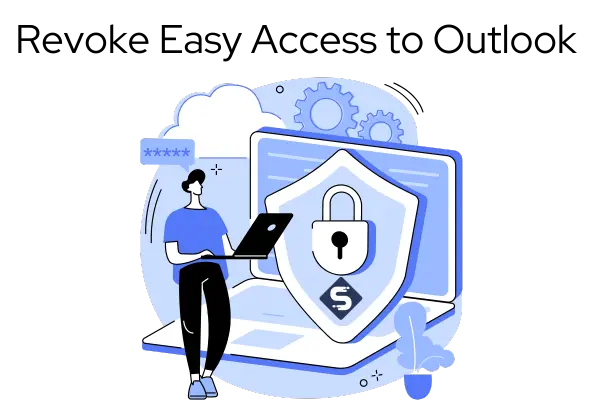Summary: Revoke easy access to Outlook is a critical security measure that will protect both your confidential information and data. While having easy access to emails, contacts, or any sensitive data across devices or networks may seem convenient, doing so increases the risk of unauthorized access or data breaches – therefore it is imperative that measures are put in place that limit its availability.
One way to revoke easy access to Outlook is through two-factor authentication (2FA), which requires users to provide extra verification when accessing their accounts – be it text message, email, fingerprint scans or facial recognition technology. By adding this step to the login process, you can ensure only authorized personnel gain access to sensitive data.
Password management policies offer another effective solution, mandating strong passwords with regular resets. Passwords should contain complex combinations of letters, numbers and symbols that cannot easily be guessed. When creating passwords for multiple accounts with one password as this increases risk. If one account becomes compromised and could lead to widespread security breaches resulting from widespread security compromise.
Contents
What is Revoke Easy Access to Outlook?
Revoking easy access to Outlook simply means taking away the ability to sign in without entering a password, even though this may appear like an inconvenience. While adding another layer of protection can seem cumbersome at times, it can help safeguard both sensitive email account data and user identities.
Simply visit Outlook settings > Security and Privacy options, selecting Easy Access and Password Reset, then making changes such as multi-factor authentication or revoking easy access accordingly.

Notably, when revoking easy access, users should create a strong and unique password to protect against unauthorized access. Furthermore, organizations could implement policies mandating regular password changes for employees who do not require constant access. By taking such precautionary steps against potential data breaches while safeguarding valuable information stored within email accounts.
If you’re struggling with your Outlook email, here’s how to fix the frustrating Outlook Stuck on Loading Profile issue.
Steps to Revoke Access in Outlook on Trusted Devices
To remove the trusted devices linked to your Outlook.com account and enforce two-factor authentication across all browsers, ensuring it is enabled at least once.
- Access Outlook.com using a web browser.
- Navigate to the Navigation bar and click on your username.
- Choose the option My account.
- Click on the Security option.
- Select the More security options.
- Under the Trusted devices section, choose the option to Remove all devices that have been granted trust on my account.
- Click on the option Remove all trusted devices to confirm the removal of the devices.
- From now on, the devices will no longer be granted access to Outlook.
How to Add Trusted Device to Microsoft Account
Microsoft advises revoking the trusted device status in case of device loss or theft. Once the device is recovered, you can reinstate the trusted status. Here are the steps to follow:
- Using the device you wish to designate as trusted, access the Settings menu by clicking on the gear icon in the Windows menu.
- Choose Accounts from the menu.
- Click on Your info.
- Select Sign in with a Microsoft account instead.
- Input the email address associated with your Microsoft account and proceed by selecting Next.
- Provide your password and click on Sign in to proceed.
- Input your existing Windows password and proceed by selecting Next.
- Choose the Next option to initiate the setup process for Windows Hello.
- You might receive a prompt to enter a PIN if you have previously set one up.
- Choose the Verify option to authenticate your identity on the PC.
- Select your preferred method of receiving a security code (via text, email, or phone) and proceed by clicking on Next.
- Input the code you received and click on Next.
- To confirm the addition of your system, choose the option Manage my Microsoft account.
- On the Microsoft account page, click on Sign in.
- Provide your login account information and click on Next.
- Input your password and click on Sign in to proceed.
- Navigate to the Devices section and choose either All Devices or select your recently added device from the list, if it appears.
- You have the option to view your recently added device, access its details, and manage the device settings.
From now on, you can sign in and access your email on the trusted device without the need to enter an additional security code. This can help you to revoke easy access to Outlook.

Learn how to troubleshoot Outlook security certificate errors and ensure a smooth email experience.
Another Method to Revoke Easy Access to Outlook
To restrict access to Outlook, take the following steps. Under File and Options, trust Center Settings and Automatic Download before unchecking “Don’t prompt for automatic download of OpenType fonts.”
Disabling add-ins is another effective way to limit easy access to Outlook. To do so, navigate back into Trust Center settings and choose Add-ins; from there choose COM Add-ins and uncheck any unnecessary ones.
If you want to ensure email attachments do not automatically download in Outlook, just modify your Attachment Handling settings. Simply revisit Trust Center Settings one more time, selecting Attachment Handling before checking off “Turn off attachment preview.” These simple steps will protect both quality and functionality when using Outlook.
Why does Revoke Access is Important
Security in the modern digital world has become an indispensable component of life. With cyber attacks becoming ever more frequent, it is vitally important that sensitive data stays safe. One effective way of increasing security measures is denying easy access to Outlook.

Outlook is one of the world’s most popular email platforms, making it an attractive target for hackers. By restricting easy access, users can lower their risk of falling victim to phishing scams or other cyber threats; multi-factor authentication and strong passwords may provide additional safeguards against this risk; additionally regularly updating security software can further protect them.
Increased security measures not only protect personal information, but they can also increase productivity and efficiency. When employees feel assured that their data is protected from external threats, they’re free to focus on their work without fearing breaches or leaks of sensitive information. Therefore, taking steps toward increased security should be a top priority both individually as well as organizationally.
If you’re wondering how to import a PST file into Outlook, we’ve got you covered with our step-by-step guide.
What are the Best Practices for Secure Email Usage
One of the best practices for secure email usage is to revoke easy access to Outlook. This means no allowing anyone else to use your computer or mobile device without first entering a password or PIN code, thereby preventing unauthorized access that could compromise the integrity of your emails.
Utilizing strong passwords that are regularly changed is another effective method to protect email use. A strong password must contain at least eight characters with uppercase letters, lowercase letters, numbers and special characters mixed throughout its composition.
Avoid clicking any suspicious links or attachments found in emails as these could contain malware or phishing scams designed to steal personal data. Always check the sender’s address, hover over links before clicking them to confirm if they are real before taking further steps. By adhering to best practices for secure email usage you can lower cyber attack risks while safeguarding sensitive information.
Conclusion
Deciding whether or not to revoke easy access to Outlook requires striking a balance between convenience and security. While email and other communication tools can increase productivity and efficiency, unauthorized access and data breaches increase. Therefore, whether to restrict easy access will depend on individual circumstances, organizational policies, security requirements and requirements for data breaches.






